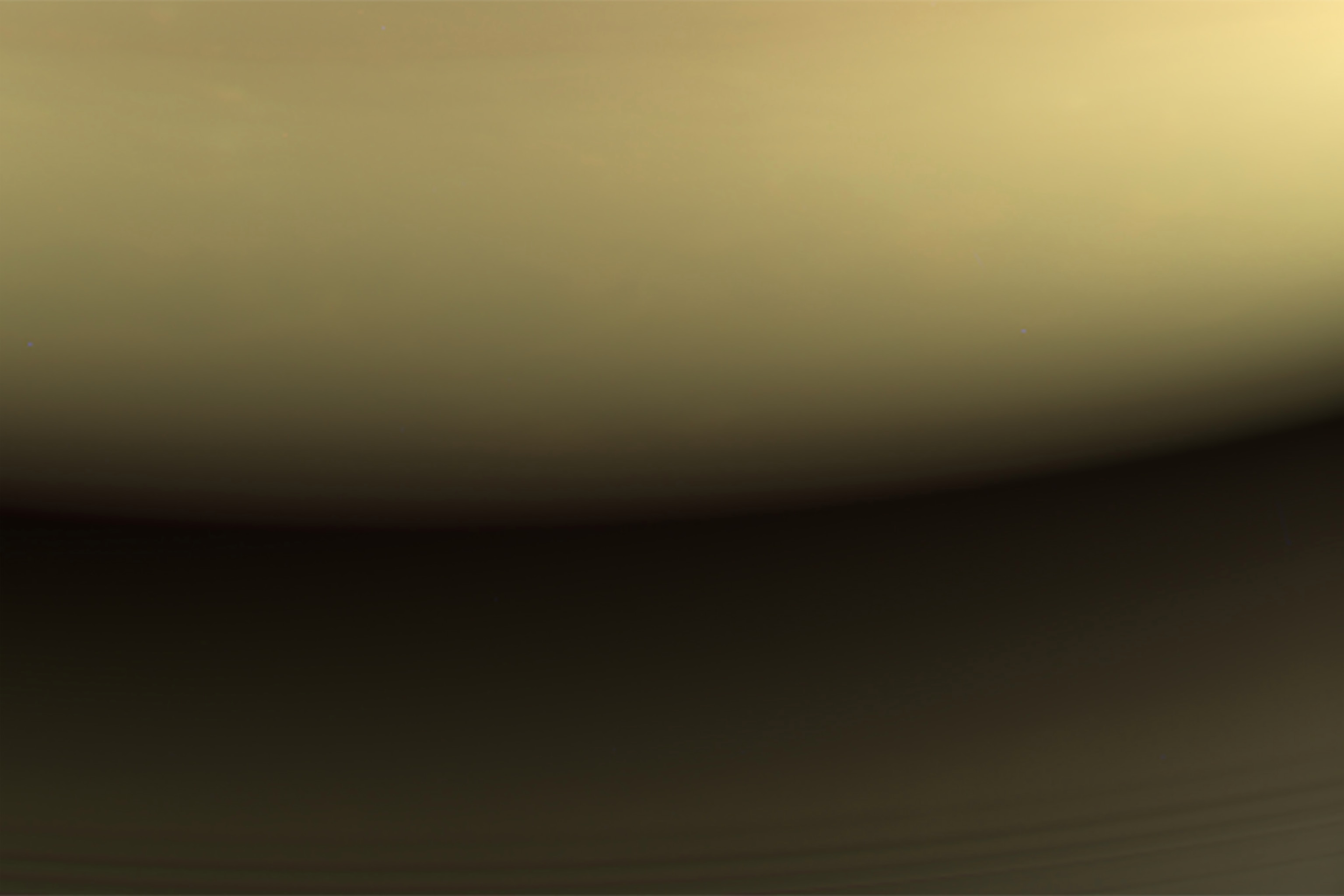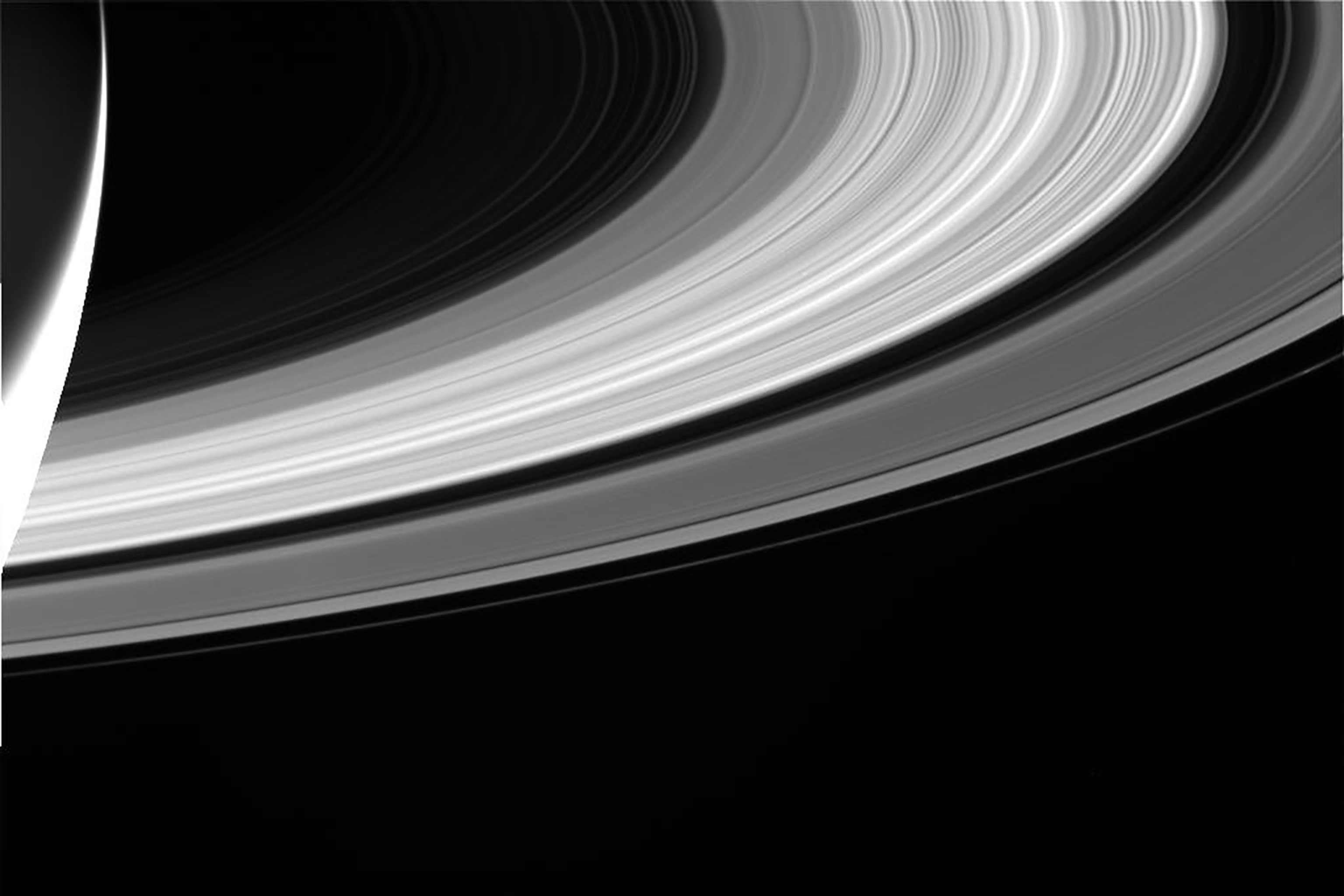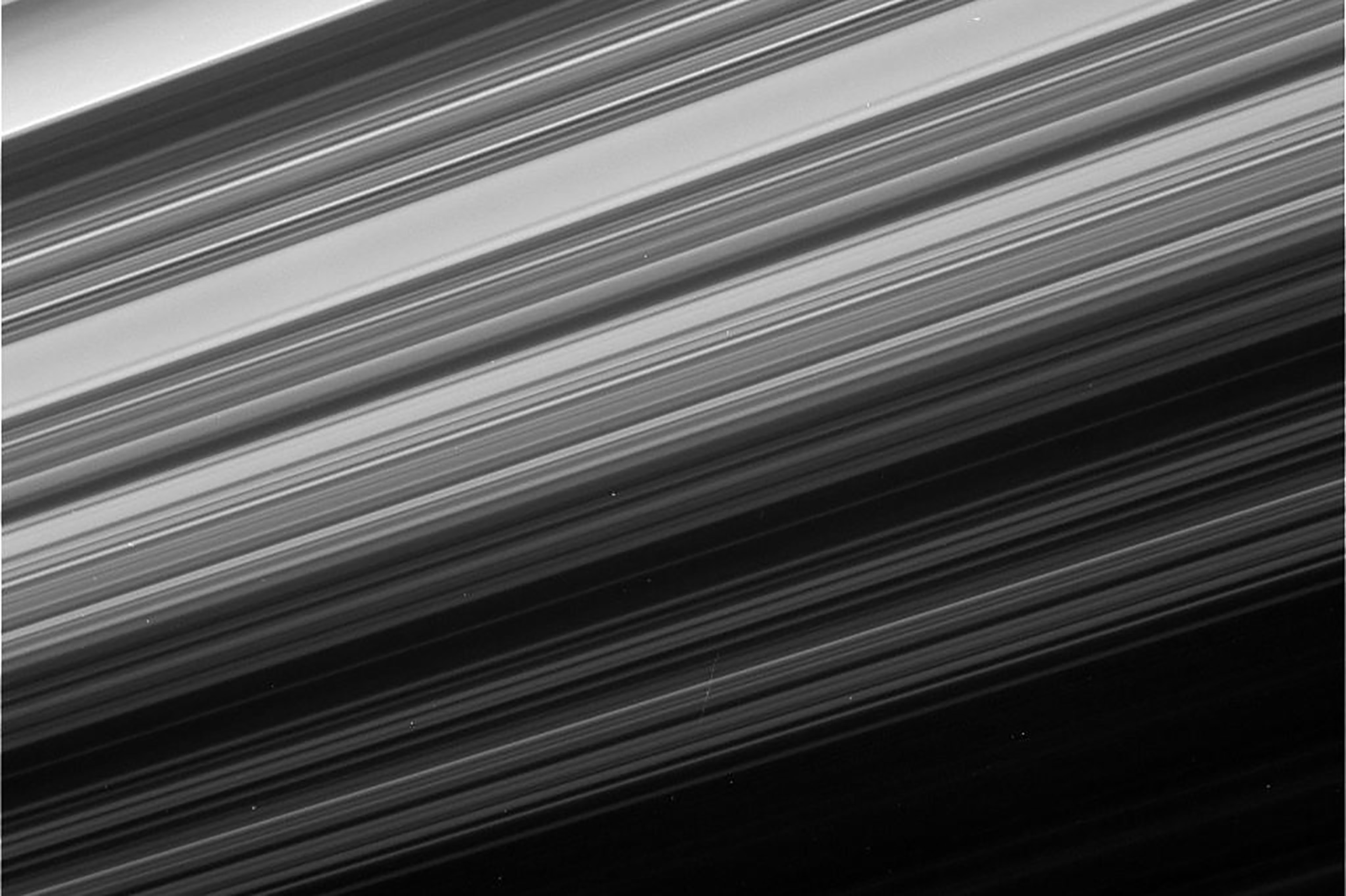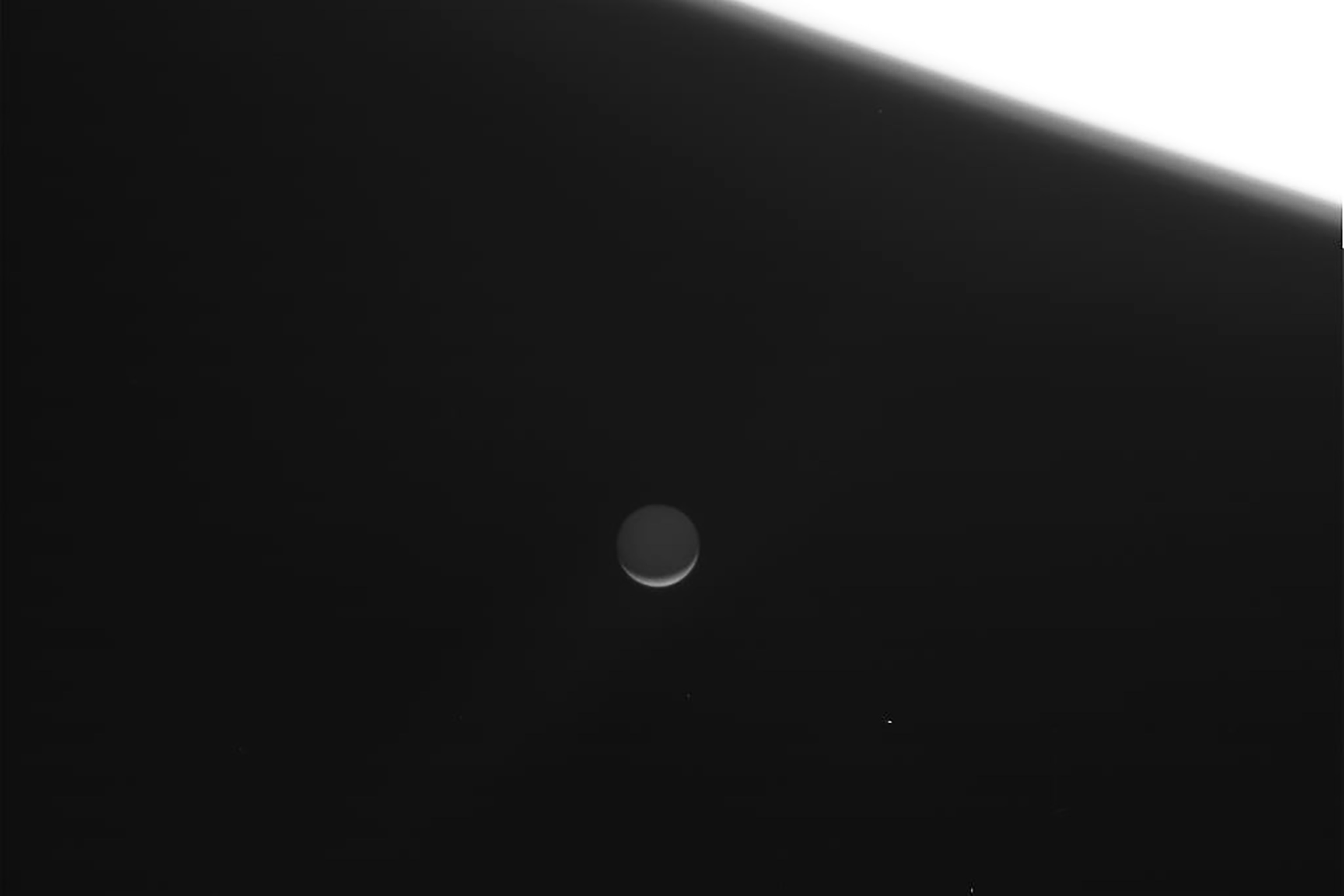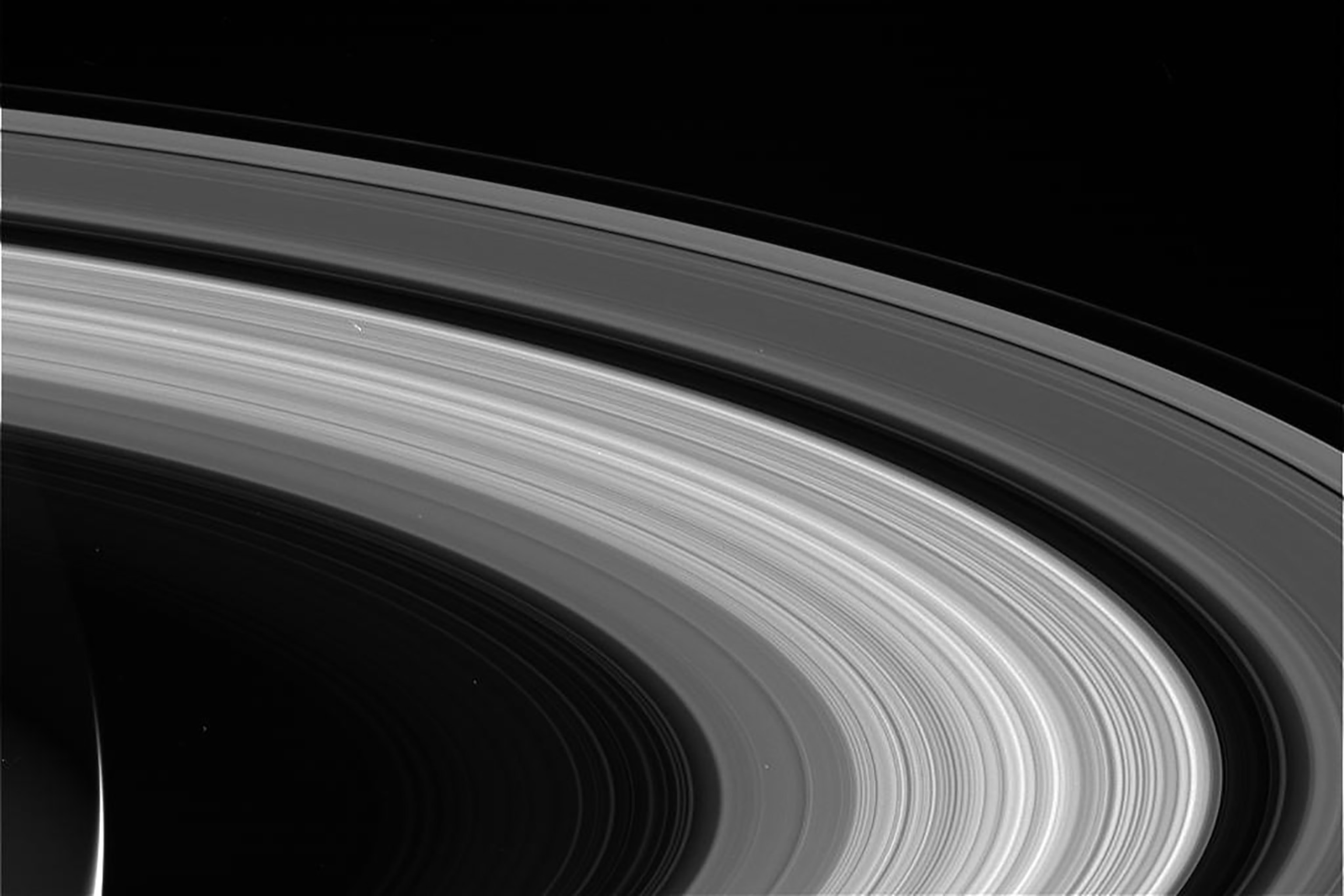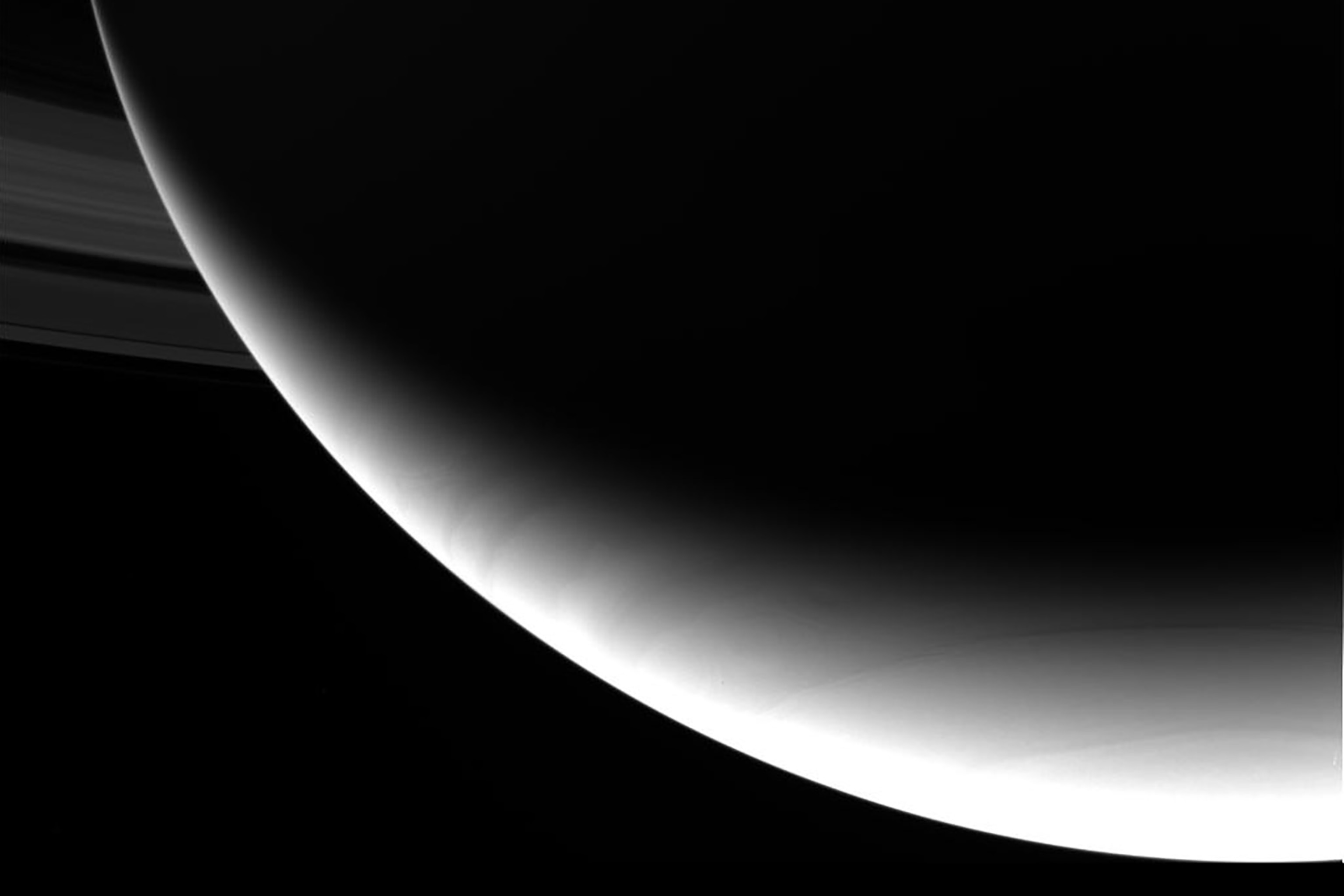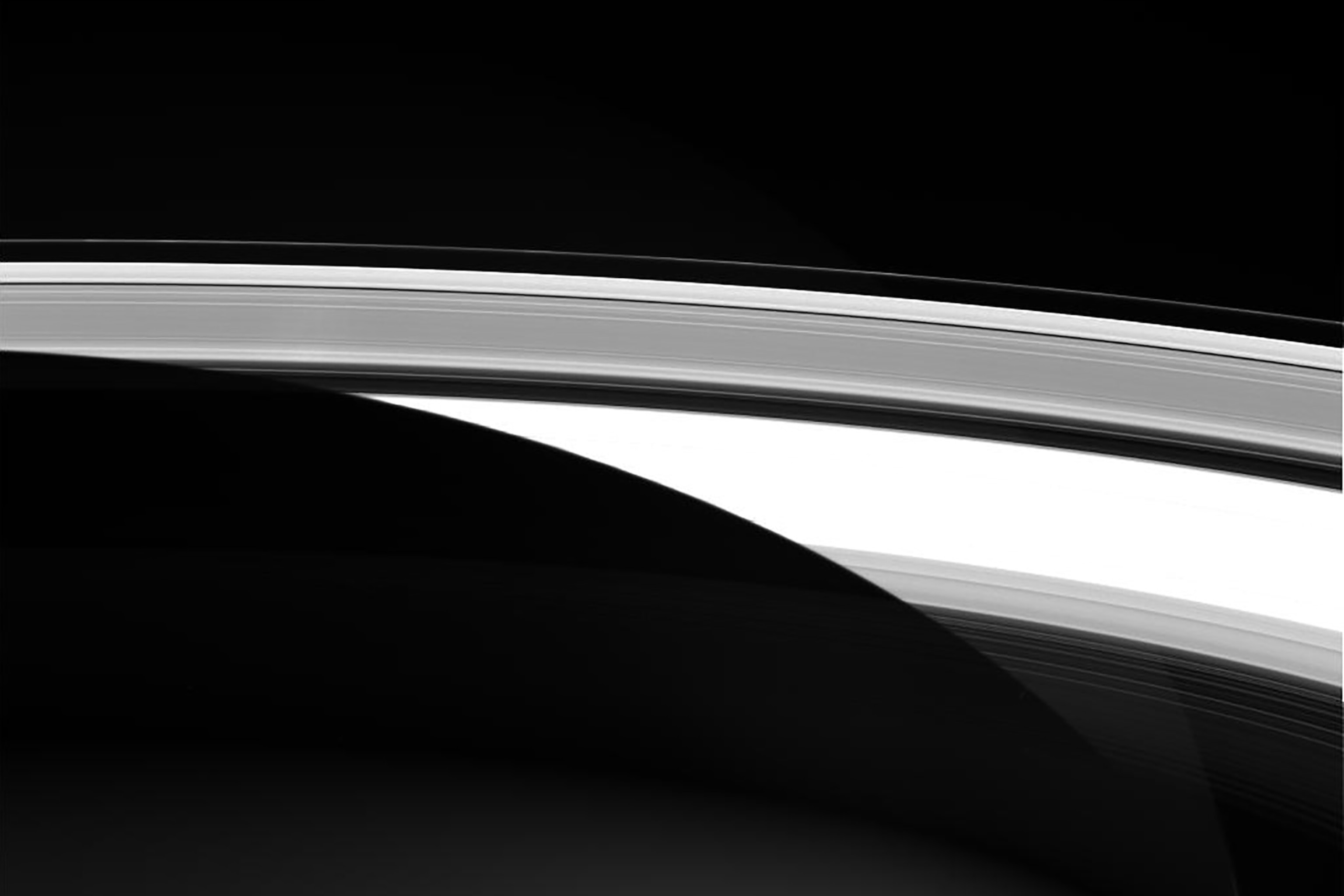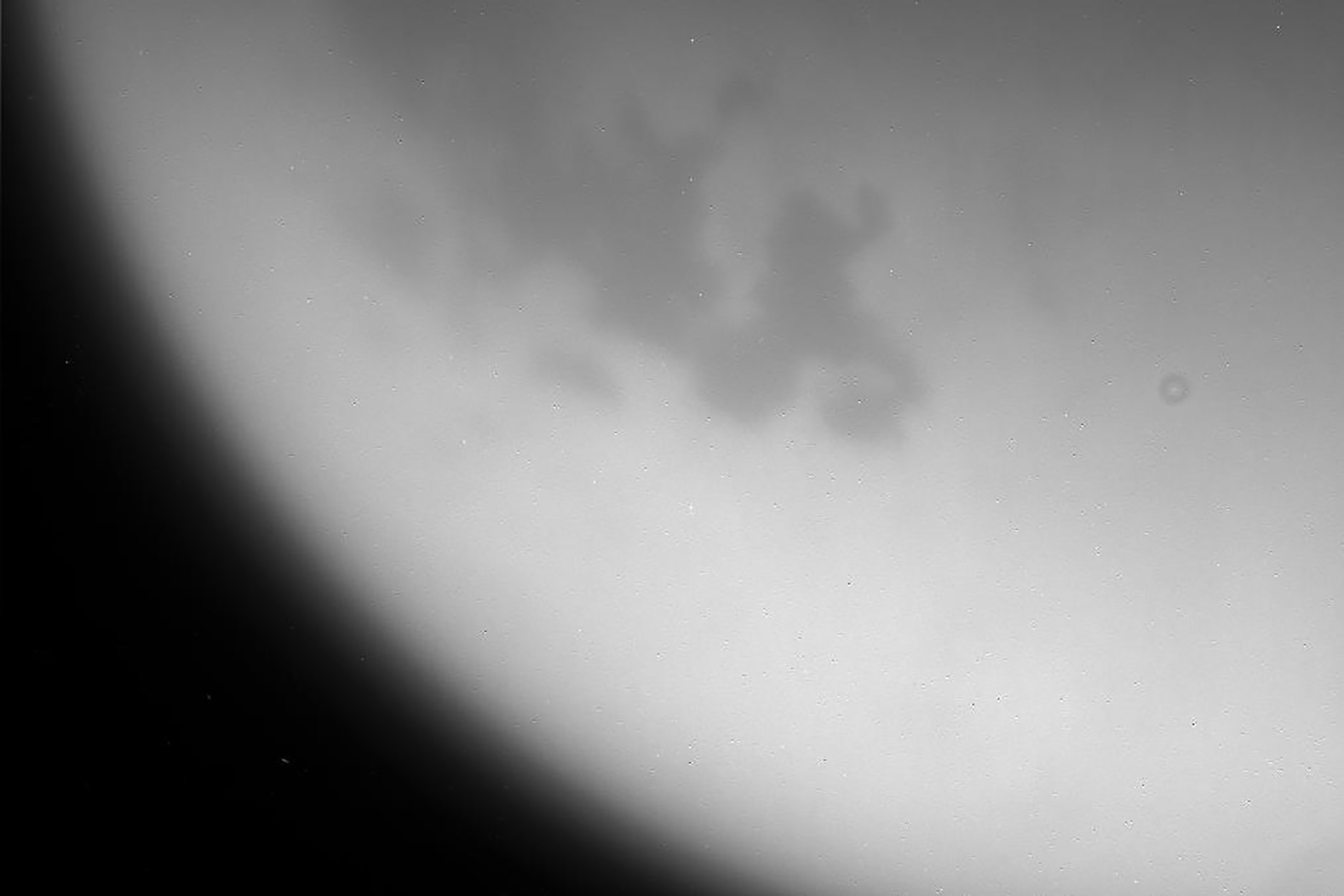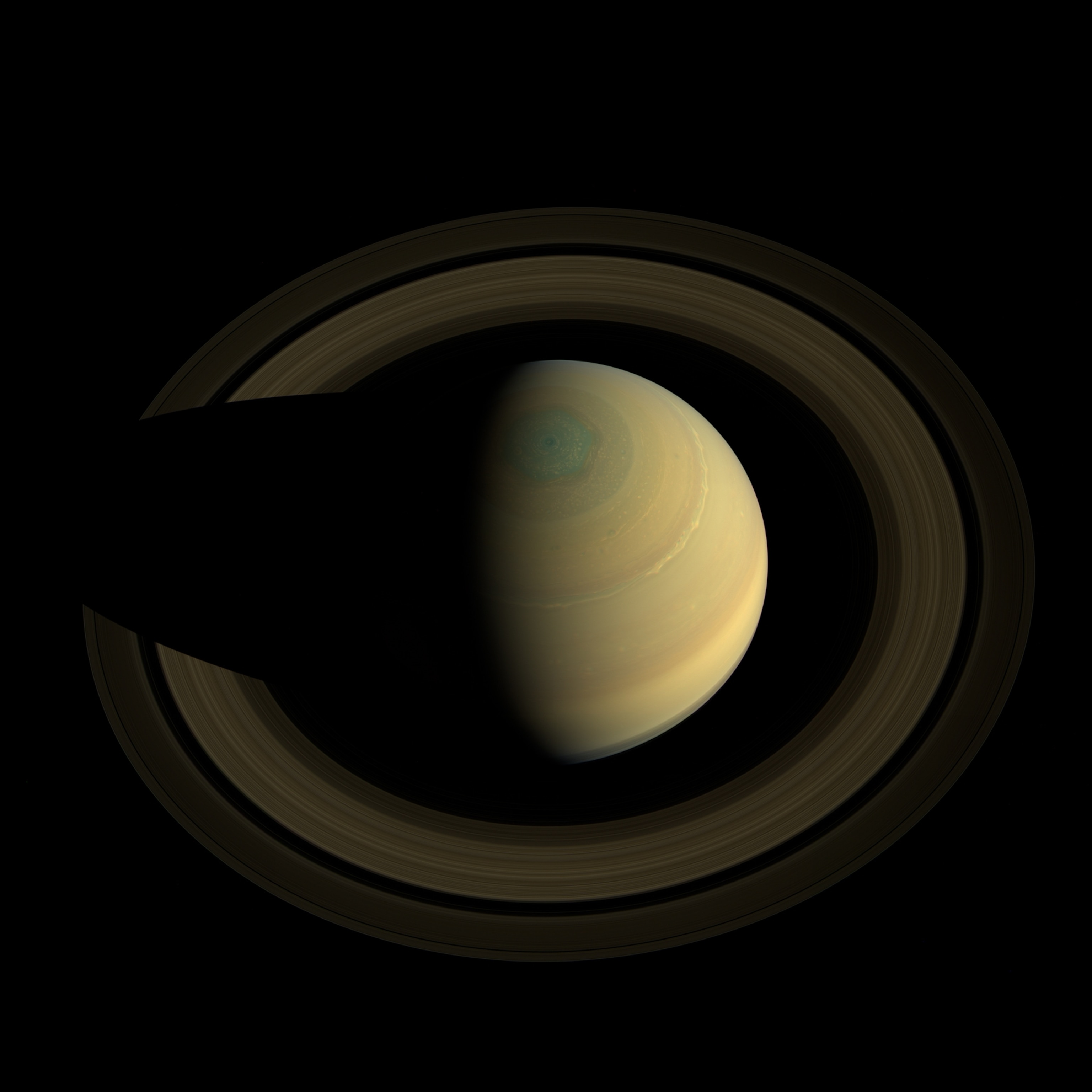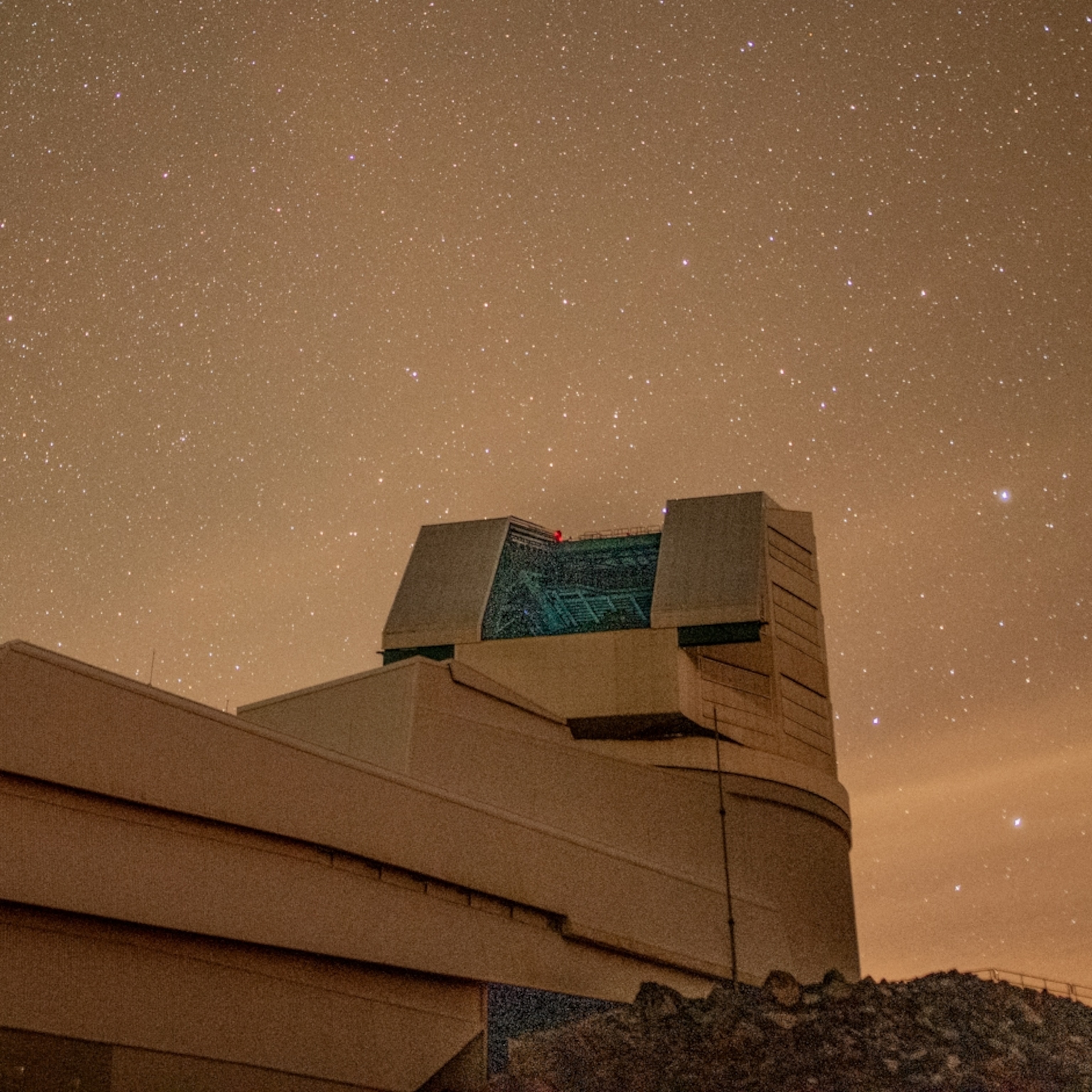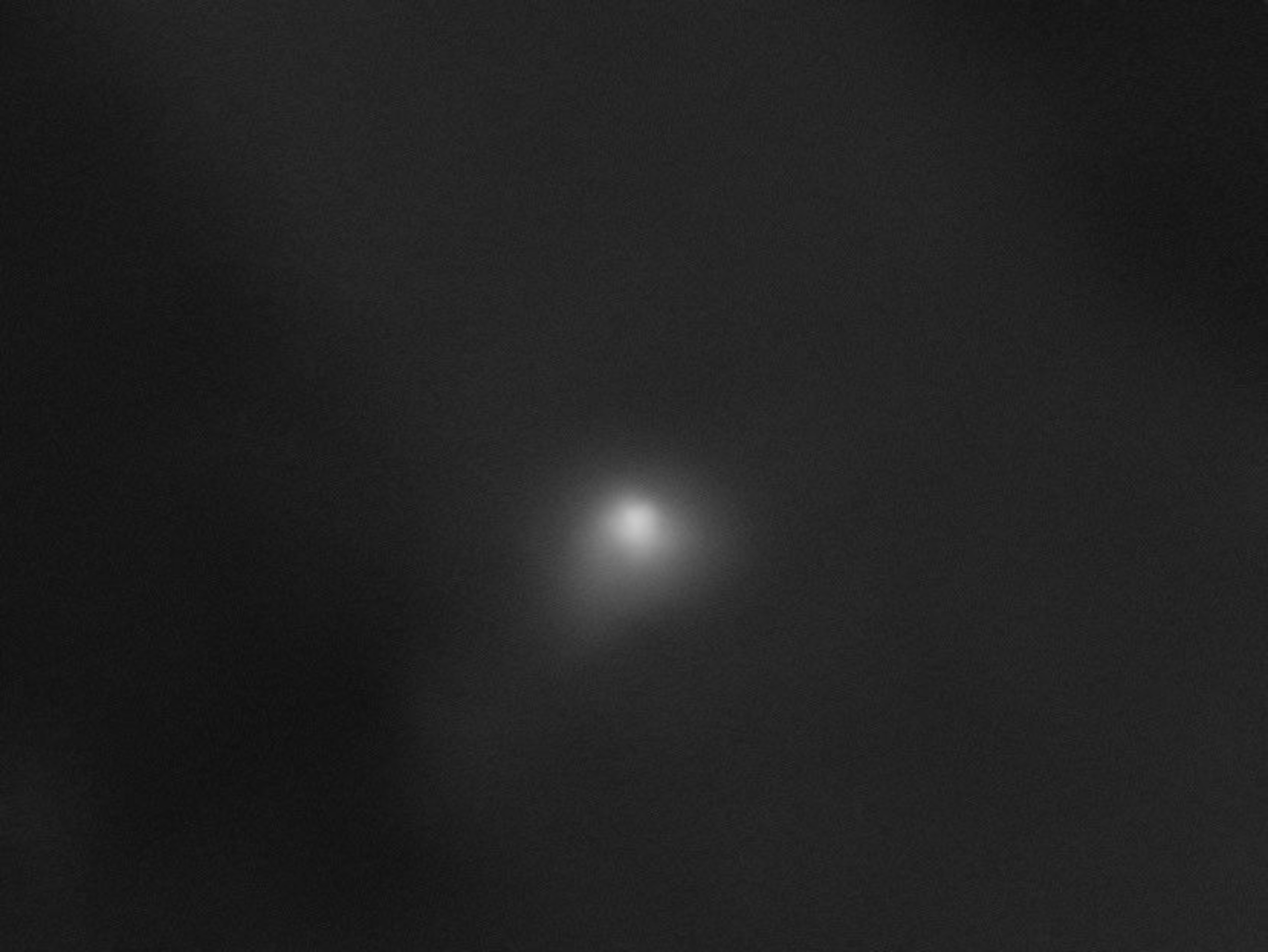It’s raining on Saturn. Each second, the planet’s rings shed perhaps thousands of pounds of water ice, organic molecules, and other tiny particles into the gas giant’s clouds.
Now, scientists are finally getting a good look at the startlingly complex interaction between Saturn and its rings—thanks to NASA’s Cassini spacecraft, which sailed 22 times between the rings and the planet during its last weeks of life, gobbling up ring-rain as it went.
Understanding that complexity is not just an esoteric endeavor. It’s a step toward solving one of the most abiding mysteries of the Saturn system: the origin and age of the solar system’s most famous bangles. Knowing the rings’ composition and the rate at which they’re shedding particles is crucial for uncovering clues about the planet’s history.
“Are we just lucky enough to be in the period of time when Saturn has these magnificent rings?” asks Sean Hsu of the University of Colorado Boulder. “It’s also fascinating to think that if a massive ring could form recently, that has implications for the other icy moons of Saturn.”
See the Last Pictures From the Cassini Mission to Saturn
Rainy Days
Material raining down from Saturn’s rings is no surprise; theories and observations have been suggesting as much for decades. But it hasn’t been clear exactly how the material moves through the system, how much of it is falling from Saturn’s skies, or how it shapes the chemistry of the cloud tops below.
Today, three reports details about ring-rain appear today in three papers in the journal Science. The ring papers are part of a package of observations made by Cassini during the waning days of its existence, just before the spacecraft ended its Grand Finale by plunging into Saturn in late 2017.
As it whizzed through the gap between Saturn and its rings, Cassini was traveling at around 67,000 miles an hour—much, much faster than any of the onboard instruments had been designed to handle. The consequences of such speed presented a challenge for scientists attempting to interpret their data.
“They’ve all struggled mightily, and very cleverly, to figure out what their instruments are revealing,” says NASA’s Jack Connerney. “This is totally outside the realm of their design and their experience.”
While in that narrow gap, Cassini measured the mass of the rings, the planet’s gravity, and its magnetic field, as well as swallowed up hundreds of pieces of ring dander. Three instruments on board, each sensitive to different flavors of ring-rain, quickly got to work studying the ingested particles. Not surprisingly, scientists didn’t find exactly what they were expecting.
For starters, there’s an entirely unanticipated layer of particles floating through Saturn’s skies, nanometer-size fluff that collides with atmospheric molecules and eventually drifts inward, raining down along Saturn’s equator.
“These particles were completely unknown before the Grand Finale orbits,” Hsu says.
Other instruments identified organic molecules in the ringfall—things like methane, butane, and propane—and loads of silicate-rich grains destined for Saturn. Particles that carry strong electric charges fall predominantly on the planet’s southern hemisphere, because they follow the planet’s magnetic field lines. Others tend to leave their footprints along the planet’s equator.
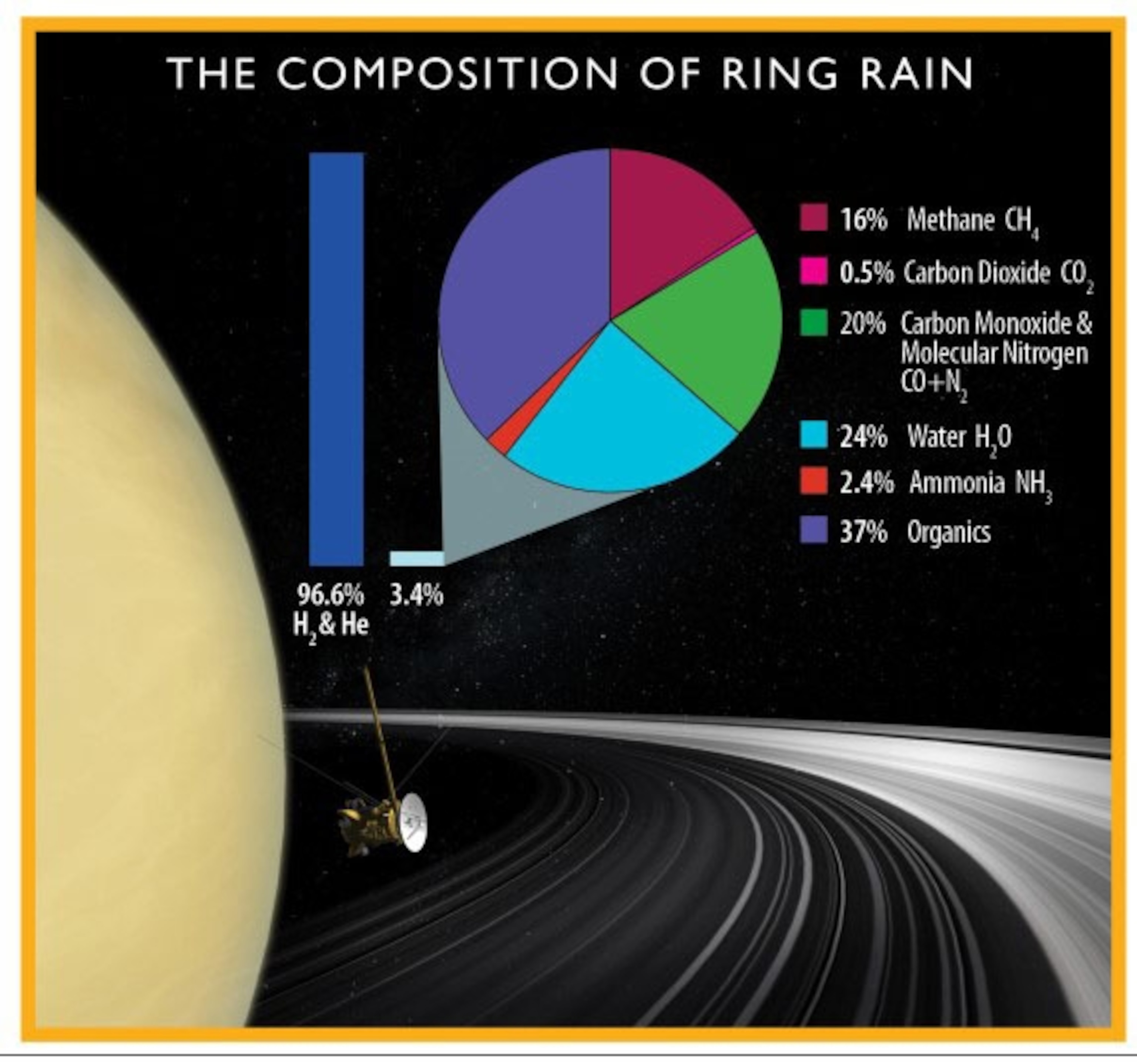
Scientists didn’t see as much water ice as they were expecting, given that it makes up between 95 and 99 percent of the planet’s rings. Jeff Cuzzi of NASA’s Ames Research Center thinks there’s an explanation for the paucity of water ice: a previously undetected belt of radiation snuggled within the planet’s D ring that strips water from icy conglomerates. In that scenario, the particles detected closer to the planet could be leftover nuggets of radiation-resistant materials like silicates and organics.
Ring Rates
More perplexingly, the three teams returned vastly different estimates for how much stuff is falling into Saturn’s atmosphere, likely the result of measuring different materials at various locations around the planet.
On the low end, one team suggests that roughly 10 pounds a second of nanograins are raining down from the D ring, Saturn’s innermost bangle. On the upper end, the rain encompasses a whopping 99,000 pounds of particulate water ice, organics, and silicates falling each second.
Scientists think that higher number could plausibly be explained by a temporary increase in ringfall, perhaps due to a recent cometary collision. But that number doesn’t make sense if it’s stable, Cuzzi says. There just isn’t enough mass in the rings to support that level of rain for the eons the rings have likely lived.
And while it’s clear that Saturn is dumping ring-rain onto the planet, Cuzzi says, it’s too soon to try and use the disparate rates to estimate anything about the rings’ age, which appear to be quite young for other reasons.
“The idea that you can age-date the rings by measuring the amount of mass that’s coming from them – in principle it’s a good idea,” Cuzzi says. “But like a lot of good ideas, in practice it’s complicated.”
Busted Moon
Still, the new Cassini results are helping with another mystery: What made the rings in the first place? The data now in hand are pointing toward a busted-up moon or comet, based on their shared compositions.
Plus, Cuzzi notes, there’s an odd cluster of silicate-rich material buried in Saturn’s C-ring, which is exactly the kind of thing you might expect to see if a moon has been pulled apart. As the moon grew and its interior warmed, silicate-rich rocks would have melted and sank into the core, while lighter, icy materials would have formed the moon’s mantle.
As Saturn tore this hypothetical moon apart, rubble from the moon's core could have stayed lodged in the thick swath of the C-ring while the icy, watery mantle formed the bright A and B rings.
How that might have happened recently—within the last couple of hundred million years—in a system that had been presumably quite stable for billions of years is an open question, as are the remaining details about how the planet and its shredded moon interact.
The final story isn’t written yet,” Connerney says. “But the outline is there for a lot of the chapters.”


